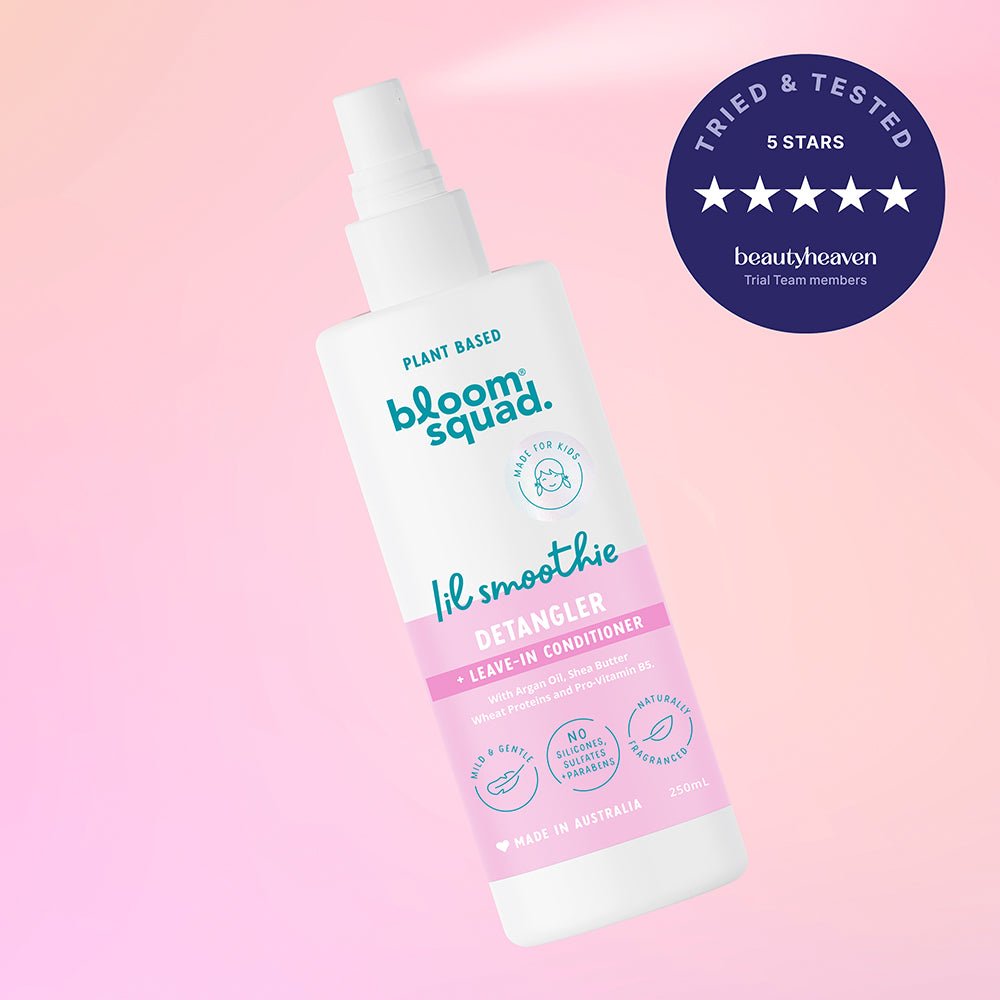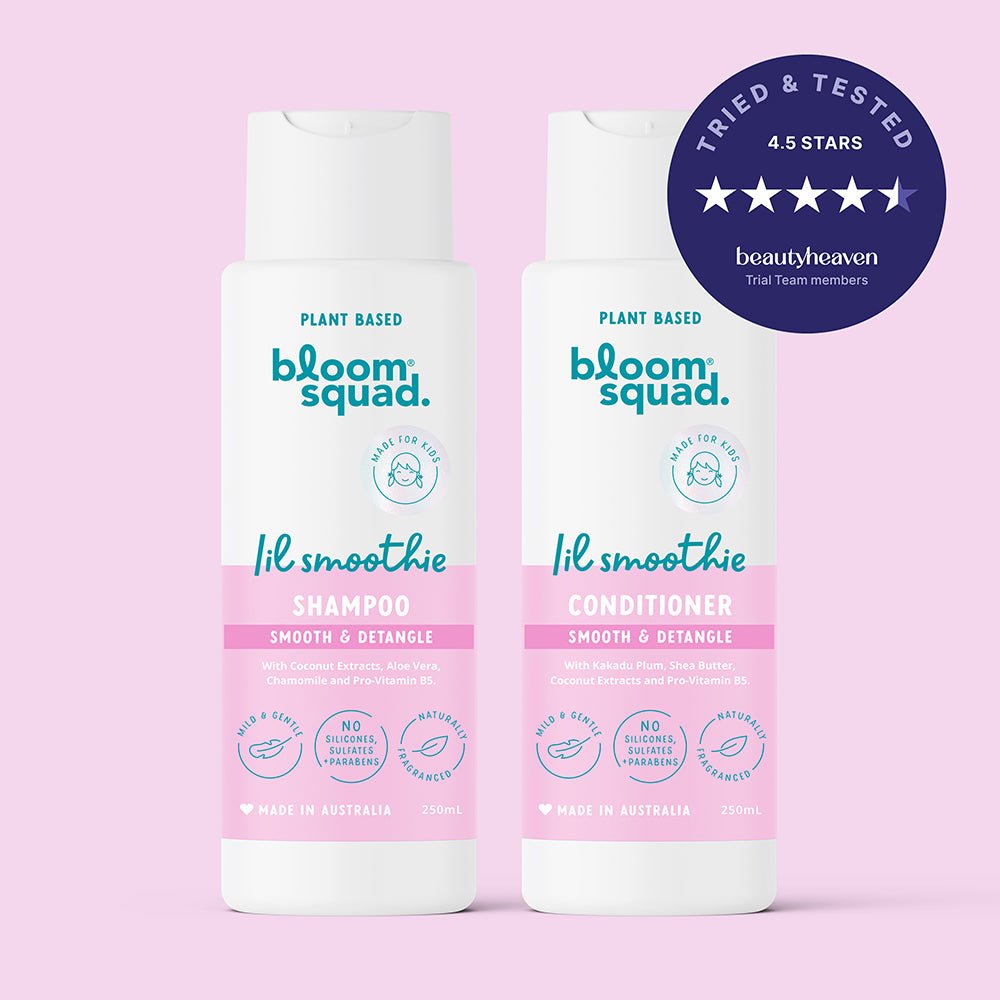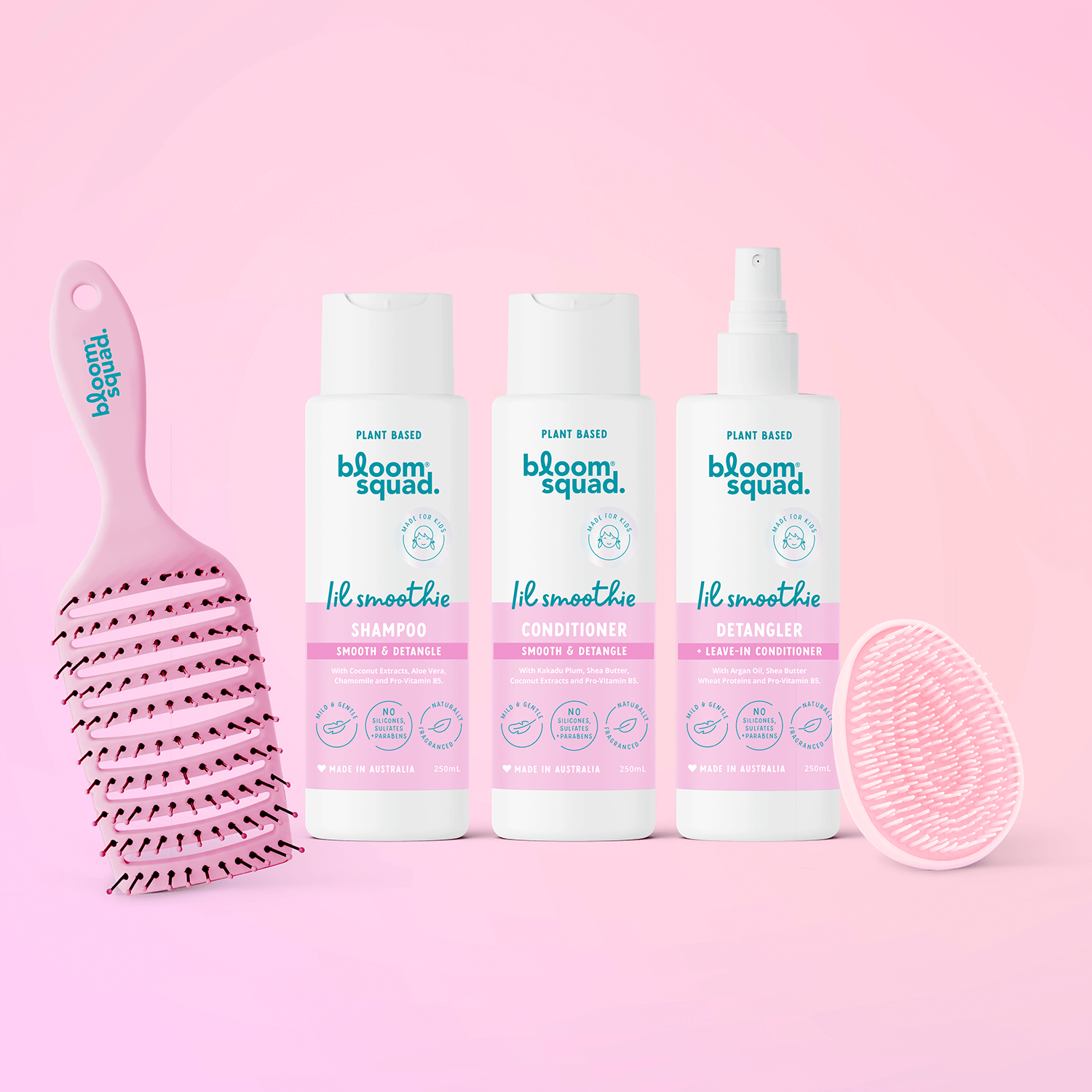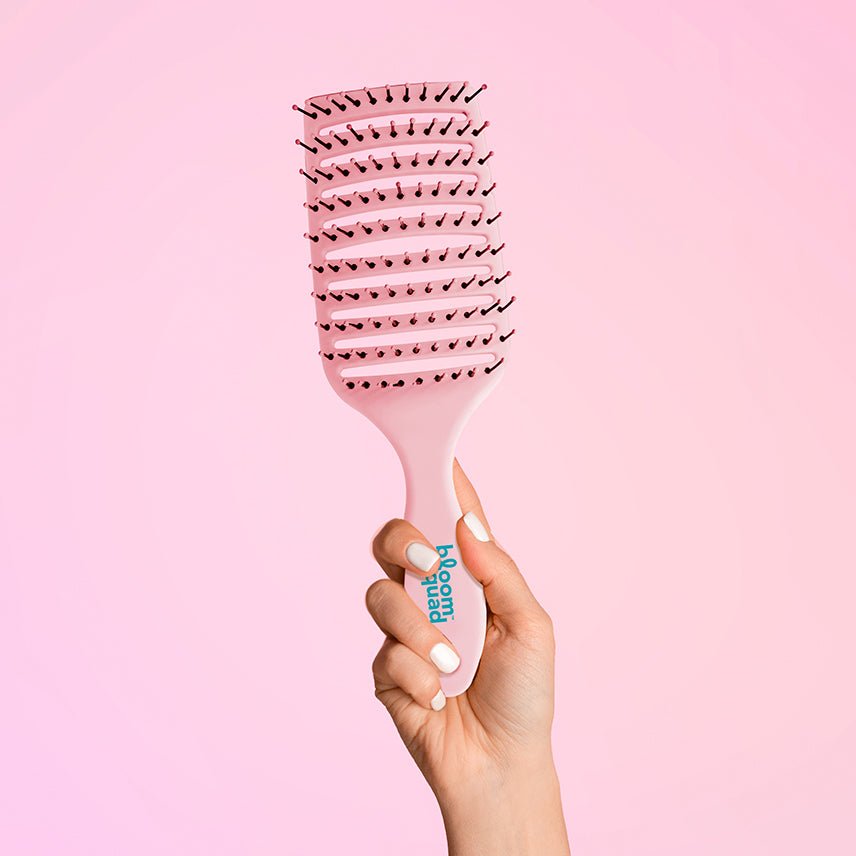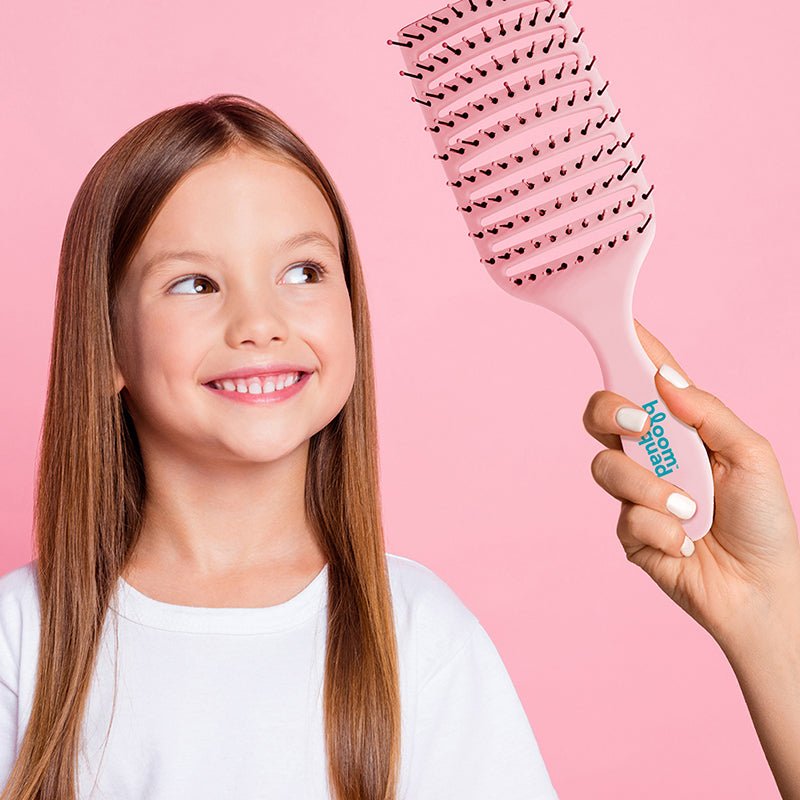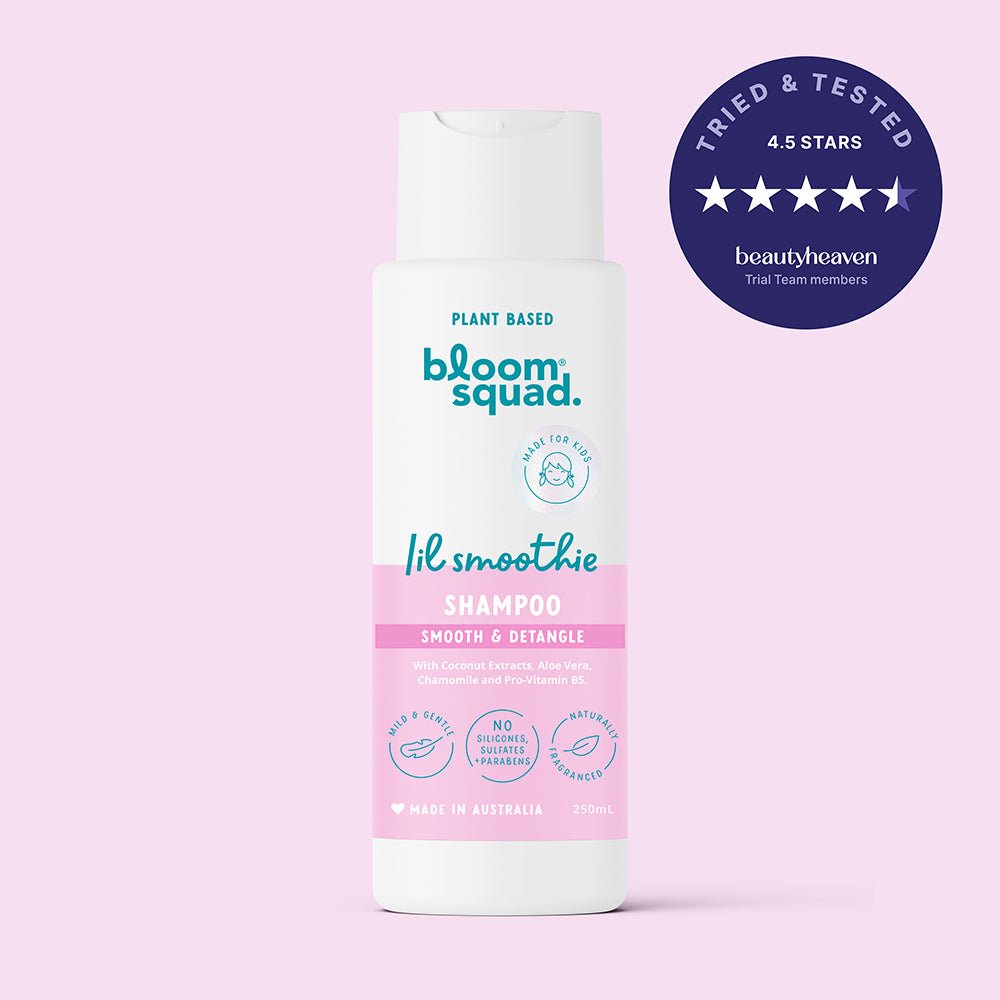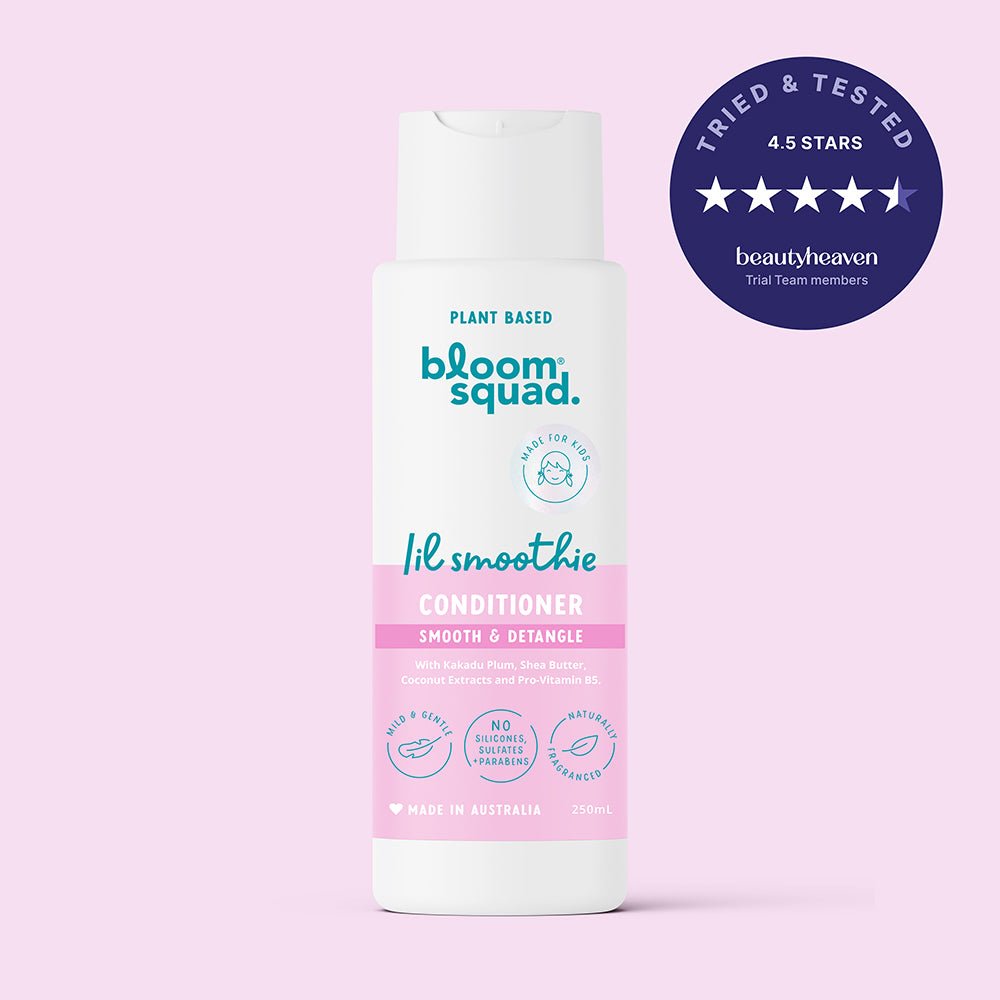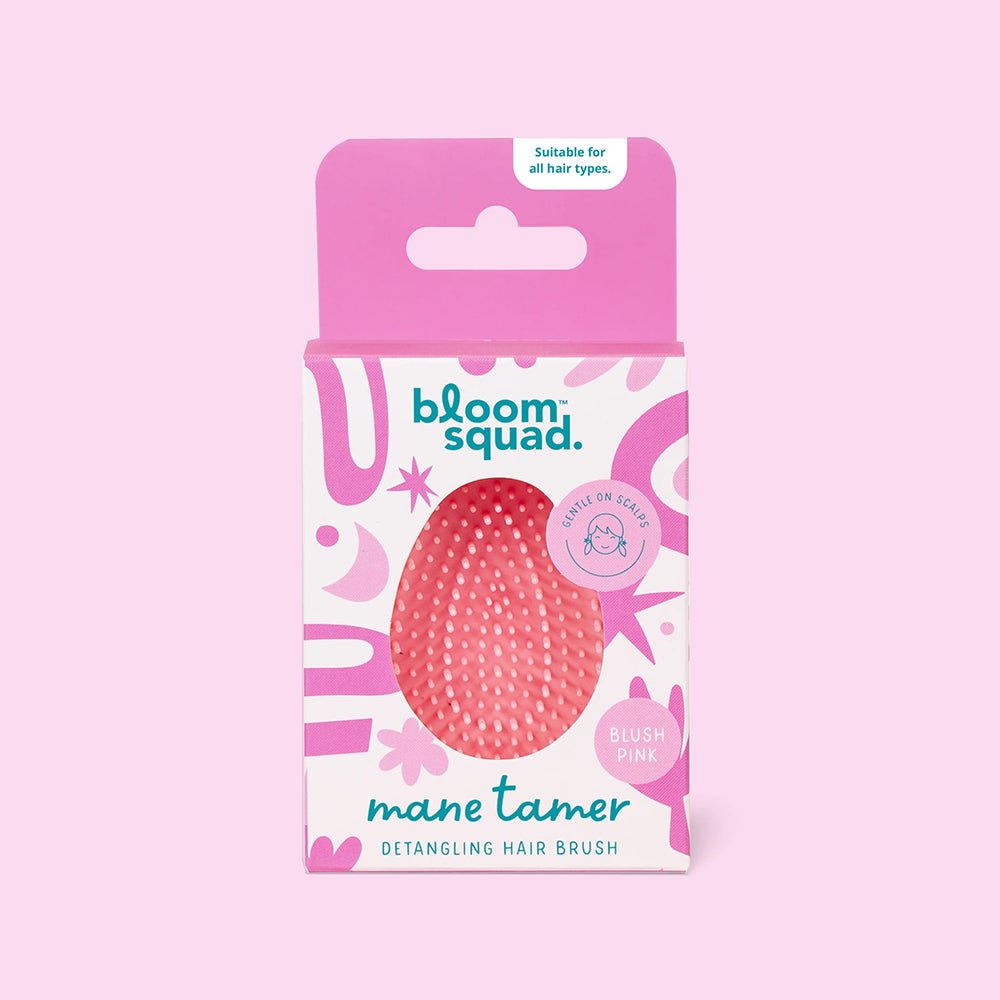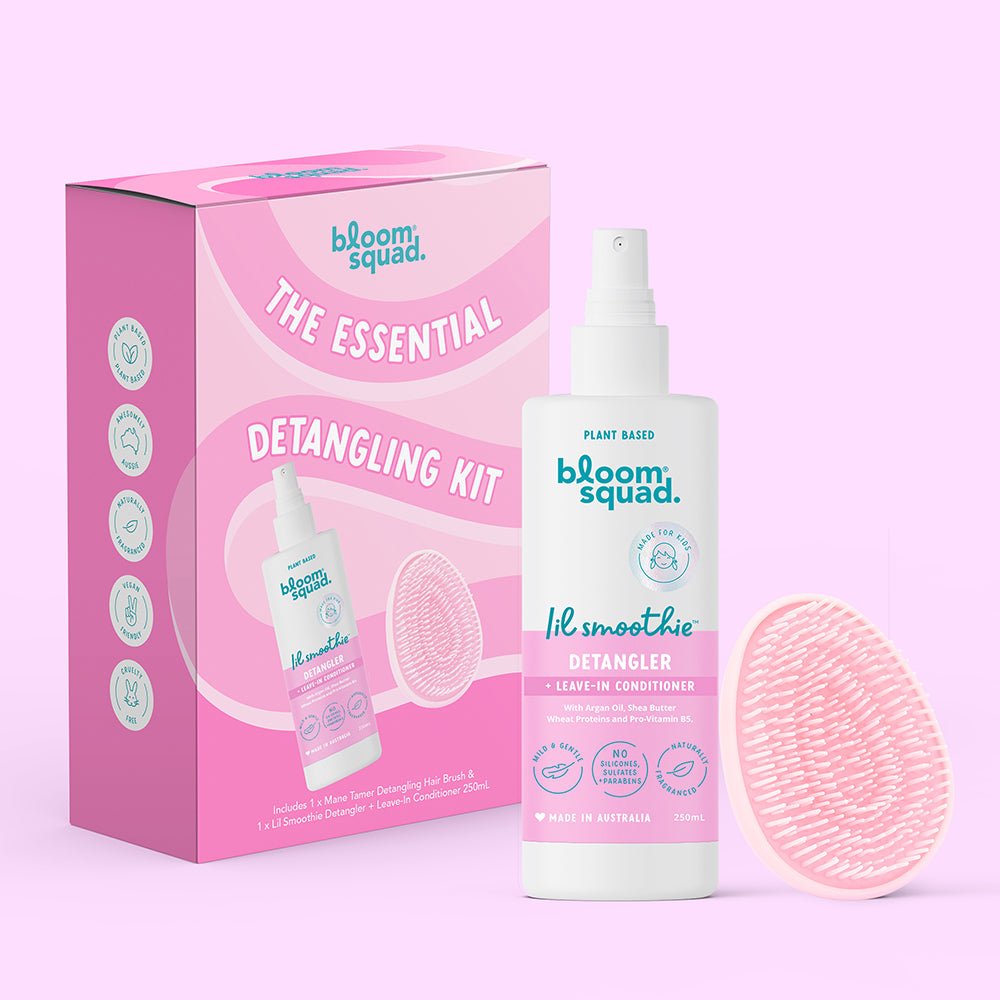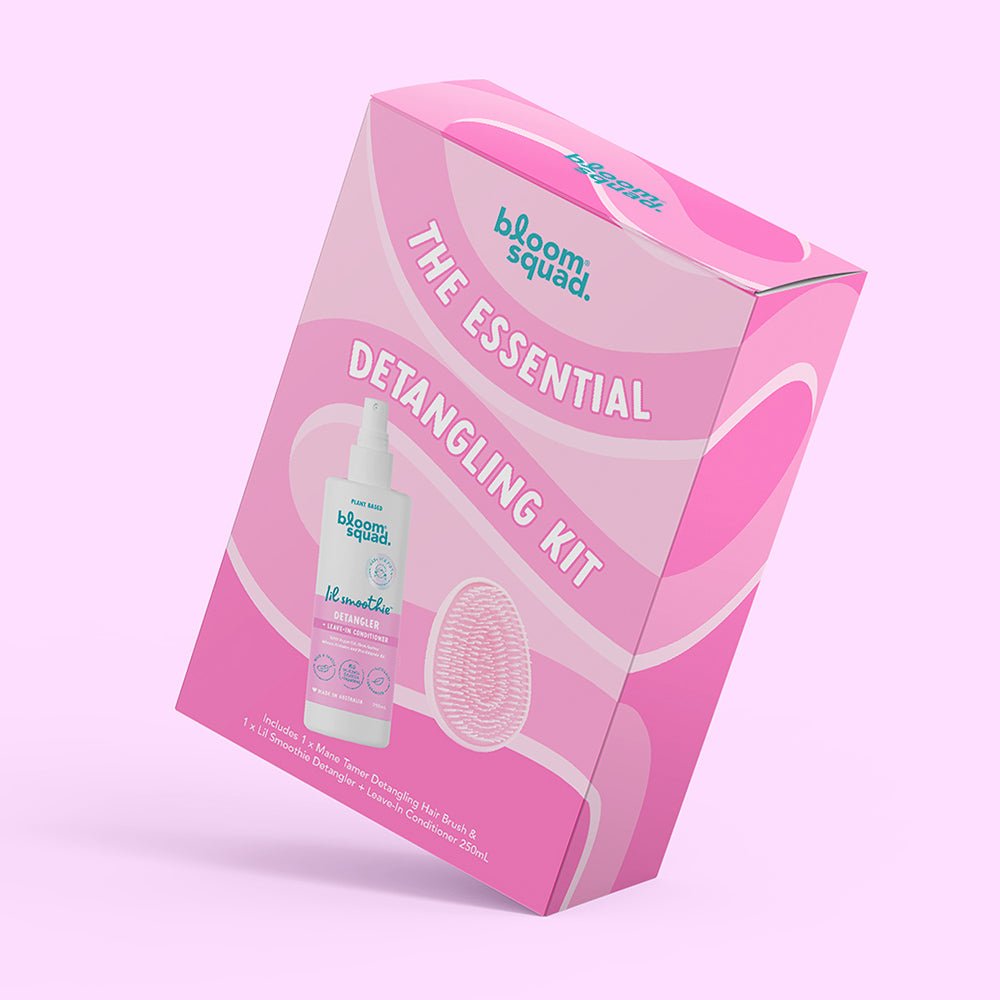Not all shampoos are created equally, especially when it comes to kids! Adult shampoo is often designed for oilier scalps, thicker hair and contains active ingredients to target specific concerns (i.e. volumising, anti-dandruff, colour protection, etc.). The reason many kids brands exist is to provide a gentler solution, more targeted to kids' needs and more suitable for delicate young skin.
Kids’ Skin & Scalps: Still Developing, Extra Sensitive, Absorbs More
Did you know that a child’s skin is up to 30% thinner than an adult’s? Studies show that during the first 10 years of life, children’s skin undergoes significant changes in barrier function, thickness, and composition.
- Young scalps produce less oil than adult scalps, meaning they don’t need the same heavy-duty cleansing elements that adult shampoos contain.
- The skin barrier is still developing. Harsh ingredients can more easily penetrate and disrupt this barrier, leading to dryness, irritation, or sensitivity.
- The scalp microbiome in children differs from adults, meaning their skin thrives best with products formulated just for them.
- It's often said that children's skin absorbs more - what this means is that due to thinner stratum corneum and developing lipid structure, their skin may be more permeable - especially when exposed to certain ingredients frequently or for prolonged periods (e.g. during long baths).
That’s why kids need a products that are gentle, nourishing and free from unnecessary actives and additives.
How Kids' Shampoo Differs from Adult Shampoo
✔ Gentler Cleansing
Many adult shampoos contain harsh sulfates, soaps, or detergents (like Sodium Lauryl Sulfate or Ammonium Lauryl Sulfate) designed to cut through excess oil and product buildup. However, kids’ scalps don’t produce as much oil, so strong cleansers can strip essential moisture, leaving hair dry, brittle, and tangle-prone. Lil Smoothie® Kids Shampoo swaps out harsh detergents for milder, coconut-derived cleansers that give a super-clean wash without drying hair or irritating sensitive scalps.
✔ pH-Balanced for Young Skin
The skin's pH is slightly acidic (around 5.5) to maintain a healthy barrier, but children’s skin tends to start at a more neutral pH and gradually acidifies over time. Adult shampoos often have high or low pH levels depending on their purpose (e.g. volumising, anti-dandruff, or colour protection), while kids’ scalps need a balanced, skin-friendly pH to maintain their delicate skin barrier. Our pH-balanced formula ensures a gentle cleanse that protects young skin. No irritation, no dryness, just healthy, happy hair.
✔ Tear-Free & Hypoallergenic
Because bath time shouldn’t be a battle, our tear-free and hypoallergenic formula ensures no stinging eyes, no red skin, and no fuss.
✔ Made for Kids' Needs
As mentioned earlier, adult shampoo brands often include active ingredients to target specific hair concerns (i.e. volumising, anti-dandruff, colour protection, etc.). Our formulas target kids' needs, like effectively detangling knots and matted hair, whilst properly cleansing the dirt, debris, and impurities they tend to collect (sunscreen, Weet-Bix, face paint – you name it! We know how it is!).
✔ No Nasty Stuff
Parents are rightfully mindful about what goes onto their child’s skin and into their baths day after day, and adult shampoos often contain ingredients that raise concerns.
Some major haircare brands on Australian shelves contain ingredients that are literally banned in other countries, due to their links to toxicity. Many contain harsh synthetics that (besides being completely unnecessary for kids) are not ideal for frequent or prolonged exposure and come with risks, should they penetrate the skin barrier (like when it gets in their eyes…).
The standards for harsh haircare ingredients that are classified as “safe” are based on the general idea that shampoo is not a leave-in product, gets rinsed off, doesn’t penetrate the skin barrier, and therefore isn’t in contact with the skin for very long. The problem with this is, many parents wash their child’s hair in the bath, so those chemicals often do remain in prolonged contact with skin, do not get thoroughly rinsed off, and can often end up in unintended areas, penetrating the skin barrier (i.e. their eyes).
Instead of using questionable ingredients just because they’re allowed in certain percentages, according to some departmental head regulatory body for industrial chemicals (who probably never washed a child’s hair in his life), we take a kid-first, mum-savvy approach. We choose nourishing, plant-based ingredients that support healthy hair growth, reduce breakage, and improve manageability – we simply leave out the questionable stuff.
If your child is ready for a starter haircare routine, Lil Smoothie® Kids Shampoo is a safe, gentle choice. No nasties, no nonsense, just clean, healthy hair.
Sources:
- Stamatas, G. N., Nikolovski, J., & Mack, M. C. (2023). Skin maturation from birth to 10 years of age: Structure, function, composition, and microbiome. Experimental Dermatology. DOI:10.1111/exd.14745
- Kanti, V., Bonzel, A., Stroux, A., et al. (2014). Influence of age and hair type on scalp seborrhea and hair properties. International Journal of Cosmetic Science, 36(6), 477-484. DOI:10.1111/ics.12163
- Kong, H. H., Andersson, B., Clavel, T., et al. (2012). Temporal shifts in the skin microbiome associated with disease flares and treatment in children with atopic dermatitis. Science Translational Medicine, 4(151), 151ra126. DOI:10.1126/scitranslmed.3004396
- Ananthapadmanabhan, K. P., Moore, D. J., Subramanyan, K., et al. (2004). Cleansing without compromise: The impact of cleansers on the skin barrier and the technology of mild cleansing. Journal of Investigative Dermatology Symposium Proceedings, 9(1), 8-15. DOI:10.1046/j.0022-202X.2003.22133.x
- Huang, C. H., Kuo, C. H., Wang, M. M., et al. (2004). The pH of the skin surface and its impact on skin barrier function. Journal of Dermatological Science, 35(3), 173-185. DOI:10.1016/j.jdermsci.2004.08.003
- Mauro, T., Scott, G., Wang, L., et al. (2010). Baby skin physiology and development during the first years of life. International Journal of Women's Dermatology, 6(2), 99-112. DOI:10.1016/j.ijwd.2010.07.010


